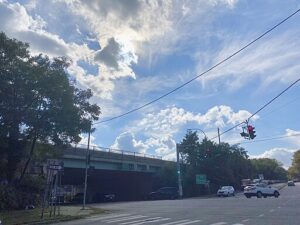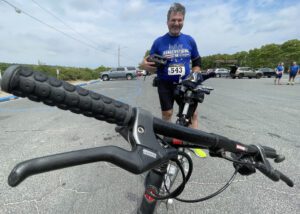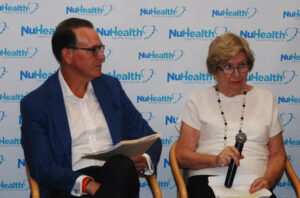By Julia Cavanagh
The Lynbrook School District was recently chosen as one of 32 districts from across the United States to take part in the Student Spaceflight Experiments Program, Project L.I.F.T.O.F.F, Mission 17, a patch design and experiment program that is sponsored by the National Center for Earth and Space Science Education and sends student work to the International Space Station.
Lynbrook High School art teacher Michael Kunz announced the news at the March 8 Lynbrook School District Board of Education meeting.
Students from throughout the district designed patches for the I.S.S. “Mission space patches have been a NASA tradition since the 1960s,” Kunz said. Student-designed patches have been around since the beginning of Project L.I.F.T.O.F.F in 2010. More than 200 Lynbrook students in grades kindergarten to 12 submitted design concepts. Fourth-grader Brielle Vainroob and 12th-grader Mia Rodriguez entered the winning designs.

Rodriguez said she created her design using a computer. Her creativity clearly flowed freely in her patch, which features the Lynbrook School District colors of green, yellow and white. “Winning this patch was such a rewarding experience knowing there were many equally as amazing patches,” she said, adding, “I’m so grateful for this opportunity.”
The winning patch designs can be viewed at the Bern Seiderman Gallery of the Arts at Lynbrook High School.
“Winning this patch was such a rewarding experience knowing there were many equally as amazing patches. I’m so grateful for this opportunity.”
Mia Rodriguez, Lynbrook 12th-grader
The Student Spaceflight Experiments Program also engages students in microgravity experiments that can be carried out on the I.S.S. The program prompts students to think about what physical, chemical or biological system they would like to experiment with and the role that gravity plays on the given system.
Earlier in the school year, Lynbrook students in grades six through nine submitted microgravity experiment proposals. Over 200 plans were read before 14 semifinalist teams were selected. Those teams then attended a symposium in early November last year. By the end, three finalist teams were chosen, with the winning team decided in December.
Lynbrook High School ninth-graders Jack Murray and Aidan Michaels developed the winning project. The experiment will test to see if wine cap mushroom mycelium can grow in a microgravity environment.
Mycelium is a root-like structure of fungus that most often grows underground or by rotting tree trunks. However, fungi (like mushrooms) can also serve as a perfect environment for a sprout of mycelium (Micropia).
Both the experiment and mission patches will take a real, not simulated, trip to the International Space Station. Kunz noted, “Each participating community is provided with their own, very real space program.”
The SpaceX Dragon Mission 17 will embark on its flight to the I.S.S. in June and will return in late spring 2024.
“S.S.E.P. is about immersing and engaging students and their teachers in every facet of real science —on the high frontier—so that students are given the chance to be scientists — and experience science firsthand,” reads the S.S.E.P. website. “More broadly, S.S.E.P. is about a commitment to student ownership in exploration, to science as journey and to the joys of learning.”









